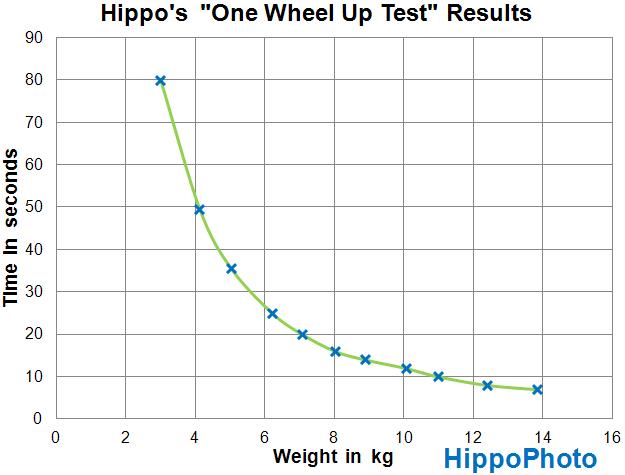OK, I think I can see what you're getting it, but I'm going to be cussed here, and play Devil's advocate for a bit...

Here's your graph:
and I think what you're saying, is that the straight line
for the overall time taken to complete the test, starts after about 8kg? Fair enough, BUT...
The time gets so much shorter, that small errors with the stopwatch have a much bigger effect on the result. I think that's the downside of using a heavier weight. So, for example, taking dfossil's 30 seconds at 5kg result, if I was even a whole second out with the stopwatch, it wouldn't really make much difference to the overall result. However, a second out on the 13s at 8kg is a much bigger percentage error. On the other hand, a false result due to a slightly binding brake, tight rear diff or propshaft bearing, etc, would have a bigger effect on the result of a 5kg test than an 8kg test. (I just like 5kg because it's a handy 5 litres of water)!
I'll try 8kg next time I see the car, and see what sort of numbers I get.
As an aside, I was tying myself in knots, trying to work out how much torque normally passes through the VCU? Obviously, running in a straight line, with correctly sized tyres, it will be next to nothing, but what's the worst case? The engine can manage 260Nm of torque. I don't know what first gear ratio is, but the 260 would be multiplied by that, as a worst case (or maybe reverse, is the worst case)? So, for example, if first is 3.5 : 1. the 260 Nm from the engine becomes 260 x 3.5 or 910 Nm. But then what happens? Is it fair to say
up to half of it goes to the front wheels and half comes out of the back of the VCU? Is there another multiplication inside the IRD first? There's obviously a multiplication in each final drive too.
The reason I'm asking, is to try to get a feel for where the 95Nm peak torque from the 8kg weight sits, in relation to what the VCU might be transmitting in real life. Intuitively, I'd have thought that 94Nm (from the 8kg on the 1.2m bar) on one back wheel, will end up being divided by about 3.5 through the rear diff, so, about 27Nm going into the VCU. No idea if that's correct, though!
Clutch? Bah! Don't talk to me about clutches! My parents ended up deciding to get it fixed in Spain, rather than scrap the car, but the final bill (the garage said the DMF was cream-crackered too), ended up coming to €2000 Euros!



